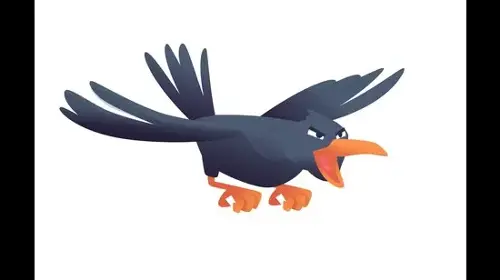
Shipping took off around the same time as Modern English (in the 15th century).
So it is perhaps unsurprising that, as these vessels became defining symbols of power, prestige and significance for Britain, a range of nautical terms sailed effortless into the language, as it was formalised.
What is surprising is how many of these terms survived, and are in use every day — with most speakers totally unaware of where they come from, or what they truly mean.
Let’s start with one I initially misunderstood: “Cut of one’s jib”.
For years, as a young person, I thought a jib was something one wore, perhaps like a shirtfront or bib. What was this garment once considered so spiffy that it remained a compliment, I wondered? What was a well-cut jib shaped like?
A jib, of course, is not a garment. It is the foresail or front sail of a ship. These sails indicated a vessel’s nationality and character, in the early years, through crests, symbols and flags. The jib was sometimes the first such sign visible, before the flag came into view.
And so, to dislike the “cut of one’s jib” meant that the early signs of someone’s character were unfavourable. Or that a person might not be exactly what they seemed.
The next is one we all use quite a lot: “By and large”. This is generally used to mean “broadly speaking” or “all things considered”. It comes to us from the 1600s, when even the largest vessels were still powered by the wind. Sailing “by” meant one was steering as far into the wind as possible; sailing “large” indicated that the wind was striking directly at the vessel’s widest point. “By and large” just encompassed it all.
“Taken aback” is another delight. Today it means one is shocked, surprised or disconcerted by a development. It has roots, once again, in the wind. In nautical terms, a ship was taken aback when it faced a headwind so strong that its sails were pressed back against the mast, preventing any forward movement.
Our last term has little to do with the wind, a lot to do with navigation, and is perhaps my favourite. “As the crow flies” is used to define the shortest distance between any two points on land. But it has its roots in the open ocean.
It derives from a time when exploratory missions left England in search of “new worlds”, or new routes to old ones, with only sketchy maps to guide them, and sometimes no real maps at all. How, then, to know which direction land lay in, as one progressed?
To answer this question, vessels took to keeping cages of crows on board. It was believed that, when released, they would fly straight for the nearest land body. And so we still say, “as the crow flies”.
Perhaps most evocatively, while the term comes to us from England, the practice itself dates much further back, to 8th century Scandinavia. And, in this sense, the phrase could be said to have its roots in those original seafarers and explorers of Europe: the Vikings.
(Adam Jacot de Boinod is the author of The Meaning of Tingo)
